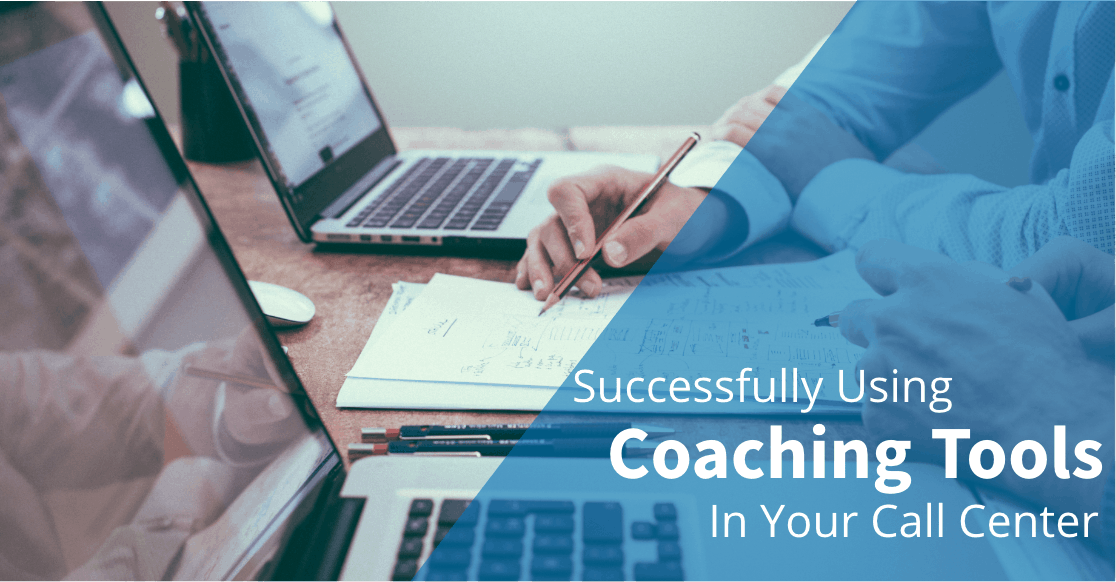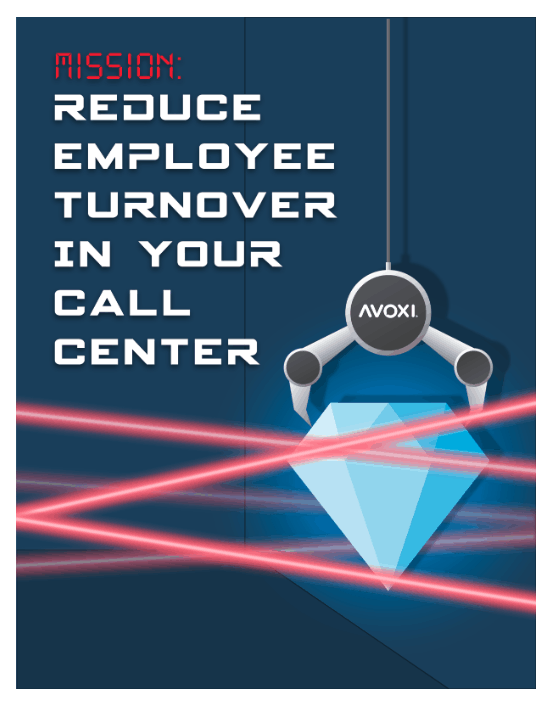Top Call Center Coaching Tools [2020] Contact Center Coaching Tools

Training your call center agents is half the battle, the other half is making sure that information learned in training is actually being used by agents. We understand how much time and effort goes into training your call center agents, so it is worth the time to make sure those efforts don't go to waste. Lucky for you there are several easy training tools for you to use. We want you to succeed just as much as you do and so we put together a detailed guide of how to use these coaching tools in helping your call center succeed. We are going to cover tools such as:
- Call Whisper & Live Call Monitoring
- Manual & Automated Scorecards
- Call Recording
Live Call Coaching Tools
Live Call Monitoring
Live call monitoring is a great tool to use when training call center agents. The best part about live call monitoring is that the agent doesn’t know that you have entered the call. This allows you to get a first-hand observation of their natural customer service skills. You also receive more accurate information about your agents than you would from just a metrics dashboard alone. Using live call monitoring can highlight any false impressions your metrics dashboard is displaying.
Call Whisper
Call whisper is an excellent training tool to use when putting your newly hired call center agents live with customers. The difference between this and live call monitoring is that the agent knows you are listening. You can use this call center training tool to help coach your new agent during a call. The customer doesn’t know that you are on the call, and if call whisper is done effectively the agent will build up their skills and confidence to eventually take tough calls solo. This training technique will have your agent able to perform faster and more efficiently in the future.
What is Scorecard?
QA scorecards are used to evaluate your agents and essential grade them on their performance and interactions with customers. Since each customer service experience is different the goal of scorecards is to be designed to effectively evaluate your agents regardless of the circumstance. Scorecards are a great way tool for agents to understand what is expected of them while they are handling customers. There are two types of scorecards; manual and automatic scorecards. Scorecards typically include grades on things such as:
Keep track of the number of times that quarter that the agent has called out of work last minute, or has been caught extending their breaks and coming in late without prior approval.
Look to see if your agents correctly greeting the customer sticking to the script designed to properly introduce themselves, the company, politely thanked the customer for calling, stated the fact that the call was being recorded, etc. It is also important that the agent uses the appropriate greeting if the call was transferred to them.
Before continuing the call did the agent ask a series of questions to get the information needed to accurately access and verify the account.
Take action in ensuring there is no miscommunication with the contact information by asking things such as how the customer spells their name, what their email is, their phone number, etc.
Take ownership and apologize to the customer for the inconvenience and continued to assist the customer. All successful call center agents provide all the essential information to the customer in the case they choose to follow up at a later date. Such information includes a reference number, a time-line for resolving the issue if it cannot be resolved right away, and all the supporting documents that were key in solving the problem at hand.
It is important to make the call personalized for the customer by continuously using their name throughout the call. As a call center agent, you should refer back to your training as a reference as to when it is appropriate to mute the call, how long a suitable hold time would be, and asking the customer before placing them on hold. Top-quality customer service agents reiterate the customer's concerns to develop the most efficient solution for resolving the problem.
It's important that agents use the proper etiquette they learned throughout their training, especially when handling difficult customers. This includes proper tone, courteous words/phrases, proper pronunciation, etc.
The agent professionally wraps up the conversation and completes the steps for setting up a follow-up appointment if necessary. Before hanging up the call with the customer they double-check to ensure that the customer is satisfied and has no other additional questions or concerns. Lastly, they thanked the customer for calling.
Should you need to set-up a follow up with a customer, the agent administering the follow-up calls within the assigned time-frame that was scheduled, and efficiently addresses the customer's additional questions and concerns.
Manual Scorecards
Manual scorecards are when someone, say a supervisor or manager, listens in on a call through either live call monitoring or an actual recording of the call and then grade that agent based on the predetermined scorecard outline.
- Pros
- Manual scorecards are extremely accurate since you are first-handly listening to the conversation that occurred between the agent and the customer
- Cons
- Manually scoring your agent's customer service skills is extremely timely
- It is impossible to score the massive number of calls that come through your call center daily
Automated Scorecards
Automated scorecards are software that gets installed on your computer. the software listens and picks up on predetermined metrics such as words, phrases, pauses in the conversation, etc. Then at the end of the call, it calculates everything it hears and gives the agent an automated score.
- Pros
- tracks performance trends over time, making the metrics easily comparable across teams and agents
- automated scorecards save managers and supervisors a lot of time
- Cons
- Automated scorecards are not as accurate as manual scorecards
- They are very black and white in the sense that they cannot produce logically scoring
- If commissions are based on automated scoring, without taking into account manual scoring as well it will increasingly lead to a low employee morale
- Employees might focus on what will give them the highest score rather than putting the actual customer first
To use scorecards the most effective it is recommended that you use both methods, manual and automated scoring. The automated scorecard is a great way to pick up on trends and for you to decide which calls to manually listen to instead picking random calls.
For Example: If your automated scorecard shows some agents continuously getting low scores, grab those calls and try to figure out what causes the low score. A customer might call and right off the bat tell the agent what their problem or concern is and instead of wasting the customers time with the whole opening script they dive right in to solving the problem. This creates a prefered customer experience however since the automated scorecard can't make judgement calls it might give this agent a low score for not following the script.
It is also imporant to pay attention to agents who continuously score extremely high on their automated ratings. Their scores might be higher because they have learned to rebotisize themselves to focusing on following the scripts rather than essentially putting the customers needs first.
Call Recording
Call recording is a tool used to record a live call with the ability to play it back later on. By recording calls with your agents you can playback calls throughout training sessions as a learning platform. Instead of pulling your star agent away from handling customers, you can just play a recording of how they handled a difficult customer and point out key learning points that took place during the call. On the other hand, if agents are performing poorly, they might not understand what they are doing wrong. You can use the recordings to highlight where agents are repeatedly making mistakes and teach them alternatives that are more appropriate in assisting the customer.

